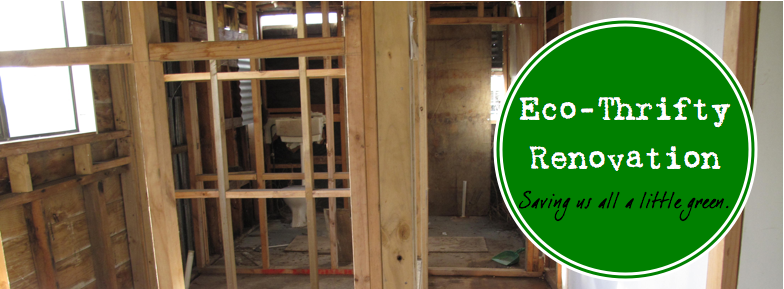Editor's note: This is an early posting of tomorrow's article in the Wanganui Chronicle. I won't have time to post tomorrow.
Many renovations are heavy on kitchens and bathrooms and
light on everything else. It appears that there is a belief that these
improvements will increase the resale value of a home while also improving
functionality and/or style for the current occupants. That thinking is hard to
argue with, except that new kitchens and bathrooms can cost tens of thousands
of dollars each, and that the housing market appears to be stalled in Wanganui,
and it could take quite a while for dwellings to appreciate enough to ‘pay’ for
the renovations when ultimately sold. (Wow, that was a long sentence.)
Old kitchen before conversion to bathroom.
Large expenditures on new kitchens and bathrooms may exhaust
a homeowner’s funds available for renovation, and preclude them from investing
in strategies that will definitely pay for themselves in a matter of years,
such as insulation and solar hot water. But let’s face it: insulation is not
sexy. A new bathroom or kitchen is.
Old kitchen before conversion to bathroom.
Eco-thrifty renovation is about finding the middle ground
between serving the needs of a home’s occupants, keeping expenses reasonable,
and putting less pressure on the planet. Instead of, say, spending $10,000 on a
flash new bathroom and another $10,000 on a flash new kitchen, we were able to
get functional and attractive versions of each, plus insulate our home and
install solar hot water for under $20,000.
Terry Lobb wrote a guest column here on our kitchen a couple
of months ago, highlighting some of the unique design elements made possible by
shopping for second-hand, quality items, such as our antique leadlight cabinet
doors purchased at Hayward’s Auctions and our Shacklock 501 coal range
purchased on TradeMe. We used both of these sources, along with Wanganui’s
Renovator’s Centre, when outfitting our $2,000 bathroom. Purchases included a
claw foot bathtub, a toilet, a pedestal sink, a laundry tub, and a wall
cabinet.
Temporary shower.
Temporary shower.
But quality, second-hand goods are just part of eco-thrifty
renovation, which also includes efforts to improve thermal comfort and energy
efficiency. Our bathroom has a large, northwest-facing window that receives a
lot of winter afternoon sun that could potentially raise the temperature of the
room to the high twenties, unless heat-tempering strategies were used.
We ‘capture’ some of the sun’s heat in thermal mass that
takes the forms of a heavy, iron tub, and two layers of plasterboard on the
wall opposite the window. Thermal mass absorbs excess heat in the afternoon,
‘stores’ it, and then releases it when the temperature of the room drops
overnight. In order to slow the cooling of the room, we insulated the ceiling
and the two external walls. We also installed a pelmet over the window, and use
thermal curtains and window blankets during cold weather.
Extra layer to plaster board going being installed.
This combination of materials and design strategies has
provided us with an attractive bathroom (color choice made by the wife) in
which we can take an evening shower in the middle of winter using free solar
hot water, and then step into a 23 degree room also heated free of charge by
the sun.
Fully installed tub and vanity.
All this was done in a tired, old villa. Imagine what one
could accomplish if starting from scratch.
Peace, Estwing


















